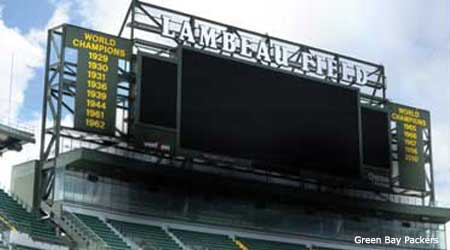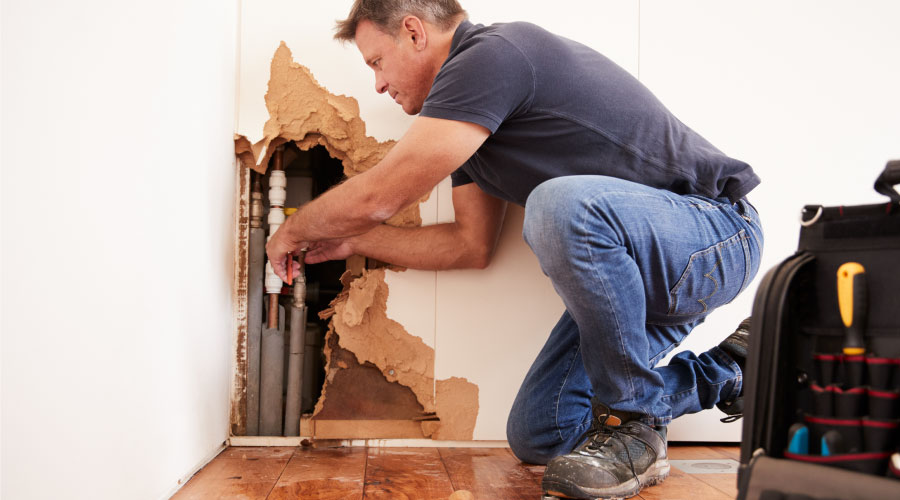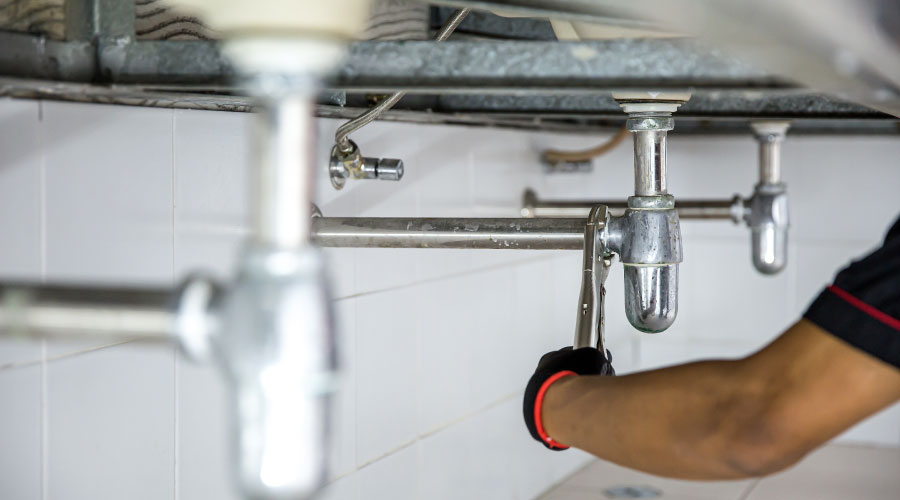Green Bay Packers Renovation Project Produces Water Efficiency
Part four of a four-part article on Lambeau Field renovation
Eisenreich says the two-year construction project went smoothly with only a minimal number of hitches, despite the complications presented by 80,000 fans moving around and through the stadium and surrounding area numerous times each year.
“Everything went fairly well,” he says. “One challenge we had was floor penetrations. It’s a unique facility. We have a number of levels. Some levels are exterior space, and the level below it a finished high-end interior space. So when we had penetrations through floors, we had to make sure if we had a water leak in a restroom that the water didn’t get down into the floor below and flood and wreck the high-end finish.
“That was a constant challenge, but we had a process to handle penetrations, so we had to make sure everybody was on board as the building started coming together so penetrations didn’t get made without taking our steps for dealing with them.”
The plumbing products also delivered the intended performance and benefits — no small feat given the thousands of uses they received during relatively short periods of high-intensity use.
“For the most part, everything performed well,” Eisenreich says. “The steps we took to reduce water usage seem to be working well. With one faucet that we used, we had an issue with the manufacturer tolerance, so we’re in the process of getting that resolved. When you have that many components going in, you always get something that isn’t quite right. But the manufacturer has been good about it.”
The plumbing products enabled the facility to use water more efficiently, though Eisenreich says the organization stayed away from setting water-savings goals as a result of the expansion.
“We didn’t set goals that way for specific amounts,” he says. “Instead, we said, ‘Let’s look for any ways we can save water. Then let’s evaluate those and see from a functionality standpoint whether that makes sense.’ Too many times, people focus on strictly saving water, and it causes other issues down the road.
“For example, we have nine floors in some areas. We have booster pumps to help our system, so we have to make sure we have the water to do that. That all affects your fixtures. If you don’t have the proper water flow, do your drains function the way they should? Sometimes, you try to cut back on water usage, and you hurt yourself in other areas.
“Our main focus was not to set a specific amount that we’re trying to save. Let’s look at each individual component of the plumbing system to see where our opportunities are to save water.”
The knowledge the department acquired related to specifying products, planning renovations and expansions, and ensuring post-installation performance turned out to be essential for the success of the 2013 expansion.
“We learned a lot of lessons on previous projects,” he says. “My staff has a number of years of experience, so all the challenges and horror stories that we could tell from previous projects or post-project problems. I mentioned the plumbing chases and how we heat those chases. In the past, we might not have had proper ventilation through those and had freeze-ups. This time around, we learned from those experiences, and we designed and built those differently.
“With every project we do, we learn something new, and we incorporate that into the next project. We’ve only been in it three years, but for the most part, we’ve had very, very few issues.”
Related Topics:















